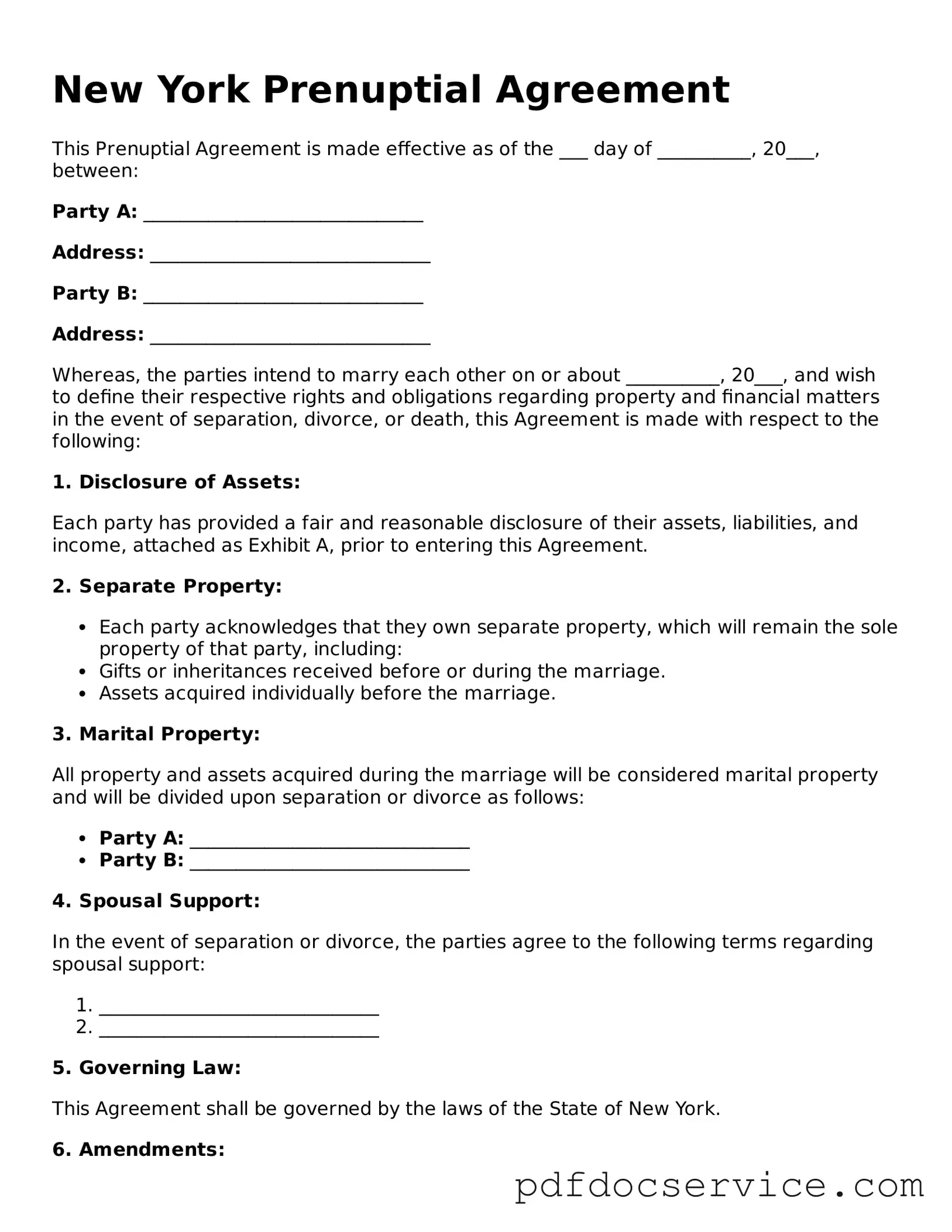What is a prenuptial agreement?
A prenuptial agreement, often referred to as a prenup, is a legal document created by two individuals before they get married. This agreement outlines the division of assets and financial responsibilities in the event of a divorce or separation. It can also address other matters such as spousal support and debt allocation.
Why should couples consider a prenuptial agreement?
Couples may consider a prenuptial agreement for several reasons:
-
To protect individual assets acquired before marriage.
-
To clarify financial responsibilities during the marriage.
-
To avoid lengthy and costly disputes in case of divorce.
-
To provide peace of mind regarding financial matters.
What are the requirements for a prenuptial agreement in New York?
In New York, a prenuptial agreement must meet certain criteria to be considered valid:
-
It must be in writing.
-
Both parties must voluntarily agree to the terms.
-
Each party should fully disclose their assets and liabilities.
-
The agreement must be signed by both parties before the marriage.
Can a prenuptial agreement be changed after marriage?
Yes, a prenuptial agreement can be modified or revoked after marriage. However, any changes must also be made in writing and signed by both parties. It is advisable to consult with legal counsel when making modifications to ensure that the new agreement complies with legal standards.
What happens if one party does not comply with the prenuptial agreement?
If one party fails to comply with the terms of the prenuptial agreement, the other party may seek enforcement through the court system. The court will review the agreement to determine its validity and whether it should be enforced. It is important to note that courts may not enforce certain provisions that are deemed unfair or unconscionable.
Are there any limitations on what can be included in a prenuptial agreement?
Yes, there are limitations on the contents of a prenuptial agreement. For instance, agreements cannot include provisions regarding child custody or child support, as these matters are determined based on the best interests of the child at the time of divorce. Additionally, agreements that are considered illegal or against public policy may not be enforceable.
How can couples create a prenuptial agreement?
Couples can create a prenuptial agreement by following these steps:
-
Discuss financial matters openly and honestly.
-
Draft the agreement, ensuring that it meets legal requirements.
-
Consult with separate legal counsel to review the agreement.
-
Sign the agreement in the presence of a notary public.
By taking these steps, couples can create a fair and enforceable prenuptial agreement that protects their interests.
